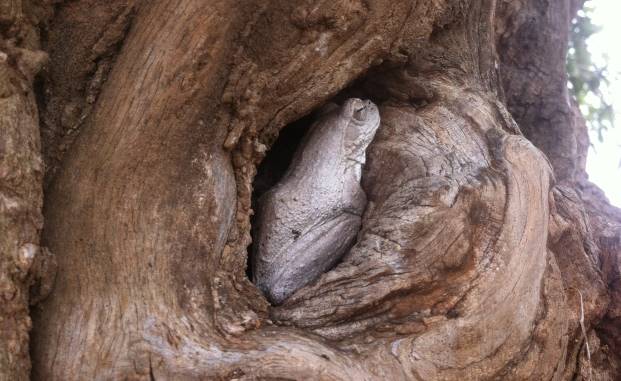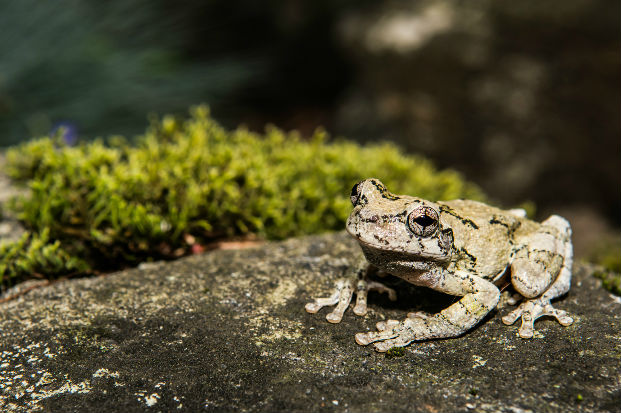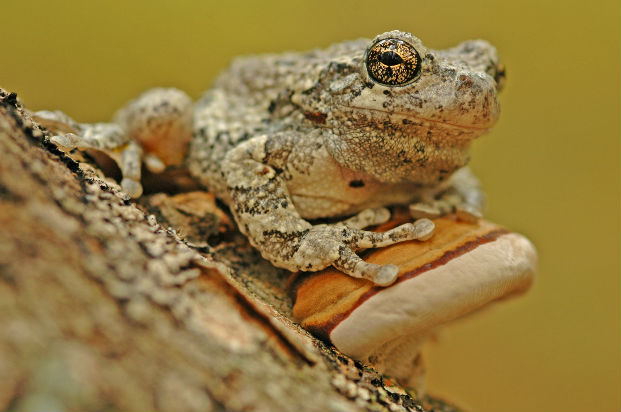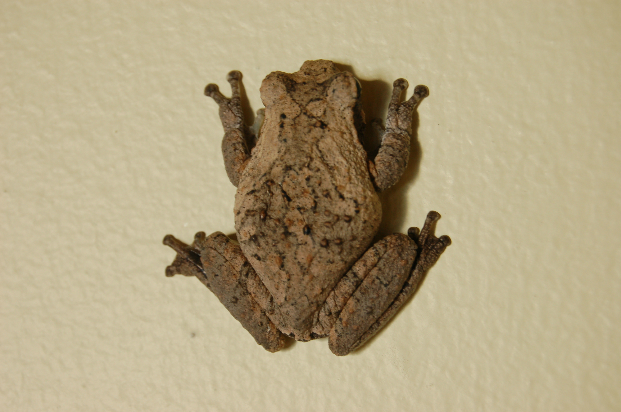
The foam-nest tree frog is adapted for the arboreal lifestyle which it leads. Its natural habitat is varied but includes subtropical or tropical dry forests and dry savanna.
In the dry habitats the seasonal rains prompt the females to come together with sometimes multiple males. They will mate and at the same time create a large frothy nest by thrashing their hind legs. This overhangs a pool of water that the tadpoles can drop in to.
Frequently asked questions
- Facts about the foam-nest tree frog
- Do tree frogs make nests?
- How do tree frogs make nests?
- How do frogs make foam nests?
Facts about the foam-nest tree frog
1. Adaptations
They are able to spend the majority of its time out of water due to its ability to reflect heat by turning white, secreting a wax-like substance to stop dehydration and, conserving water by concentrating its urine.
2. Nest protection
The nest offers the tadpoles protection and protein in their early stages of development. After 4 to 6 days the 1cm tadpoles will fall from the bottom of the nest into the water below.
3. Foam-nest tree frog camouflage
They spend the majority of its life in vegetation, to enable it to do so it has a number of adaptations such as being able to conserve water, change colour to blend into its surroundings and it has large pads on the end of each toe to aid clambering about foliage.
4. Foam-nest tree frog reproduction
A female will take 7 hours to build her nest of froth. During this process she will enter the pool 2 to 4 times to rehydrate. On her return she will continue building the nest and laying the eggs but the mating is likely to be with a different partner.
5. Nest protection
When foam-nest tree frogs mate the females produce an oviduct secretion. This is then whipped up with her and the attending male’s hind legs to create a froth in which the eggs are laid and fertilised. The froth dries with a meringue-like crust to protect the eggs.
6. Eggs
There may be as many as 12 males present at a mating, those that have not been able to mate with the female will simply add their sperm to the mixture of foam and eggs in the hope that they will fertilise some of the 1,200 eggs that she has laid.
Wild Earth captures a sighting of three foam nest frogs mating, egg laying and preparing a foam nest. Video length: 56 seconds. Video source: Wild Earth
Foam-nest tree frog FAQs
Do tree frogs make nests?
Foam-nest tree frogs make a temporary nest which overhangs the water. When the eggs have hatched and the tadpoles have reached 4 to 6 days old they will drop from the nest into the water below.
How do tree frogs make foam nests?
The female foam-nest tree frog produces an oviduct secretion. She and any males hoping to mate will whip it up into foam using their hind legs. The nest will take 7 hours to build during which she will re-enter the pond 2-4 times to rehydrate.
How do frogs make foam nests?
Foam-nest tree frogs create a foam into which they lay their eggs. This froth dries to create a meringue-like crust to protect the eggs and subsequent tadpoles until they are 4 to 6 days old.
Overview video of the foam-nest tree frog
The southern foam nest frog is also known as the grey tree frog. Murray of Bundu Fundi goes in search of this fascinating amphibian. Video length: 8 minutes. Video source: Bundu Fundi
Discover more
Another incredible amphibian of Africa is the bushveld rain frog,
if attacked it will inflate its body to intimidate predators and to lodge itself in its burrow. This behaviour gives it its Afrikaans name, blaasop, meaning “puff up”.
find out all about it in our species profile.
Vote for the fact you find most fascinating
When foam-nest tree frogs mate the females produce an oviduct secretion. This is then whipped up with her and the attending male’s hind legs to create a froth in which the eggs are laid and fertilised. The froth dries with a meringue-like crust to protect the eggs.
There may be as many as 12 foam-nest tree frog males present at a mating, those that have not been able to mate with the female will simply add their sperm to the mixture of foam and eggs in the hope that they will fertilise some of the 1,200 eggs that she has laid.
A female foam-nest tree frog will take 7 hours to build her nest of froth. During this process she will enter the pool 2 to 4 times to rehydrate. On her return she will continue building the nest and laying the eggs but the mating is likely to be with a different partner.
The foam-nest tree frog is able to spend the majority of its time out of water due to its ability to reflect heat by turning white, secreting a wax-like substance to stop dehydration and, conserving water by concentrating its urine.
The foam-nest tree frog spends the majority of its life in vegetation, to enable it to do so it has a number of adaptations such as being able to conserve water, change colour to blend into its surroundings and it has large pads on the end of each toe to aid clambering about foliage.
The nest of the foam-nest tree frog offers the tadpoles protection and protein in their early stages of development. After 4 to 6 days the 1cm tadpoles will fall from the bottom of the nest into the water below.






